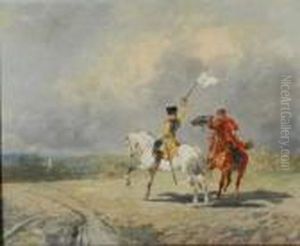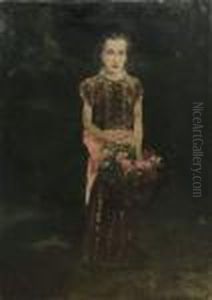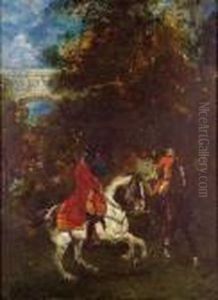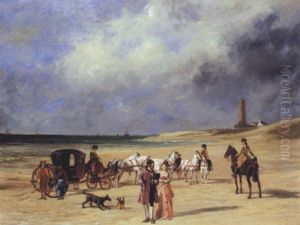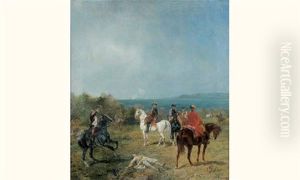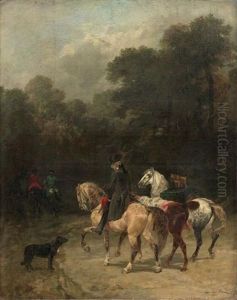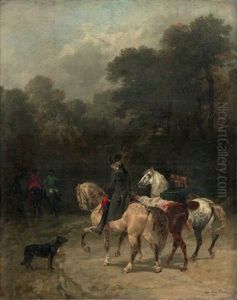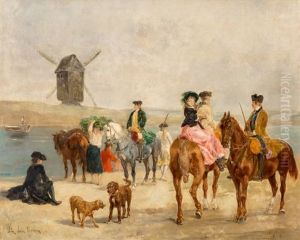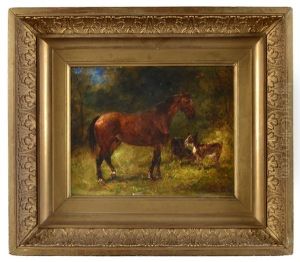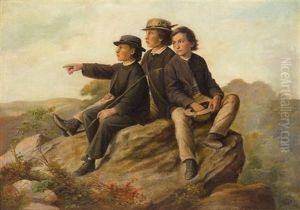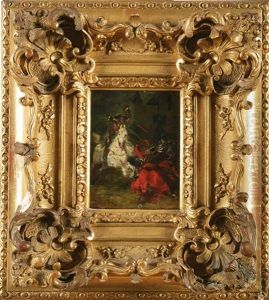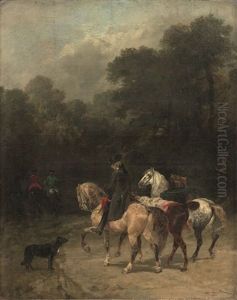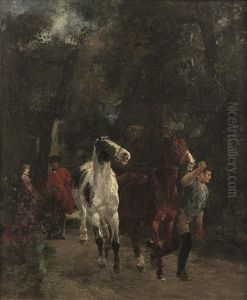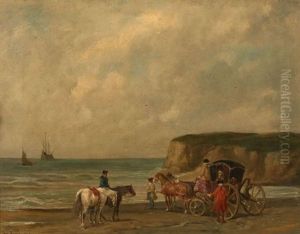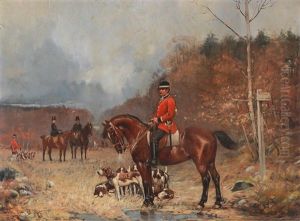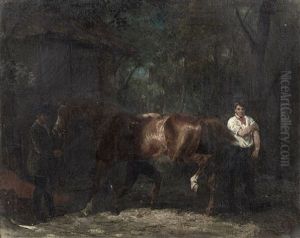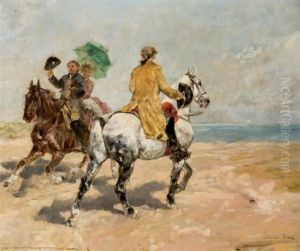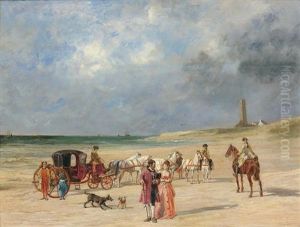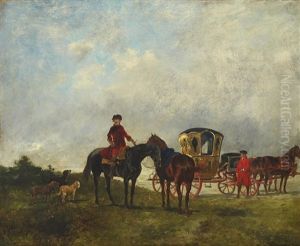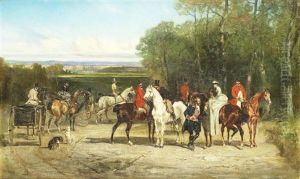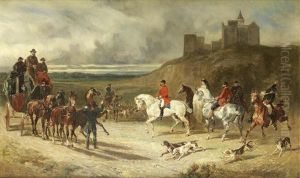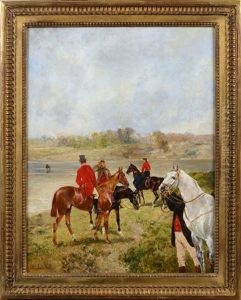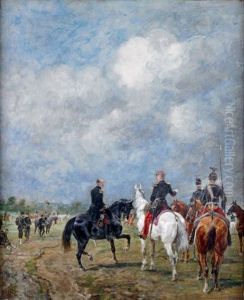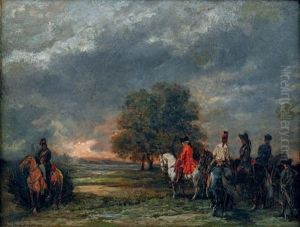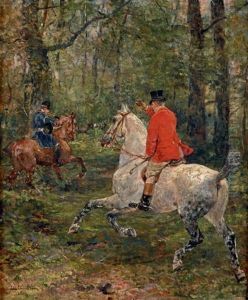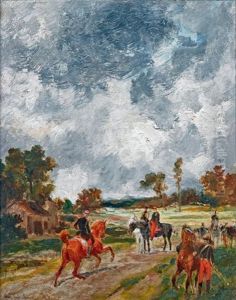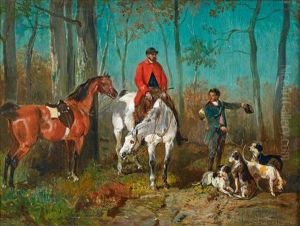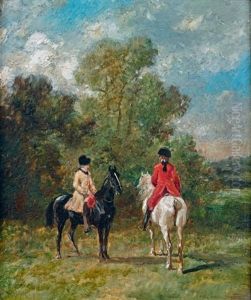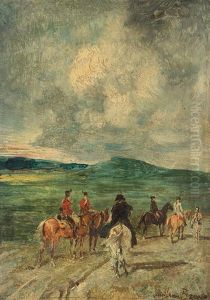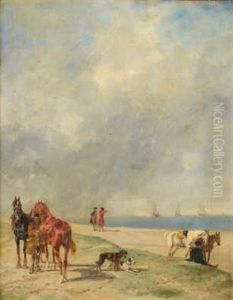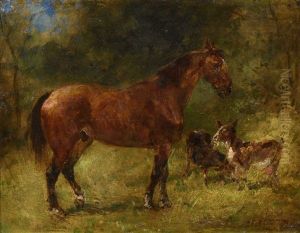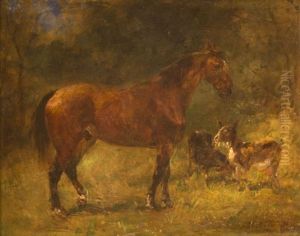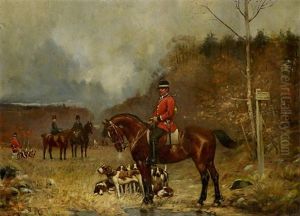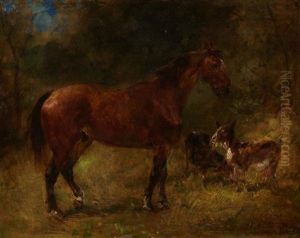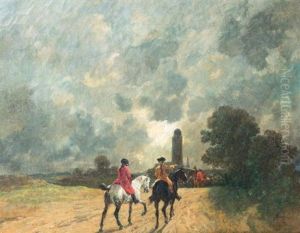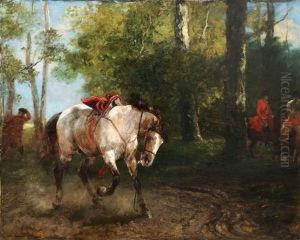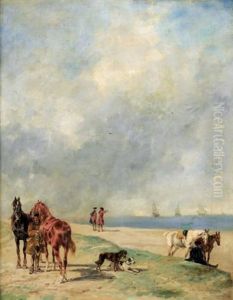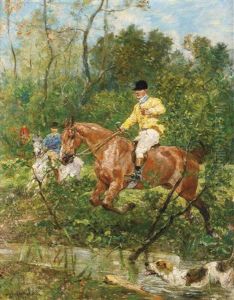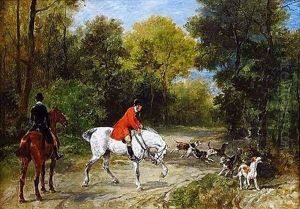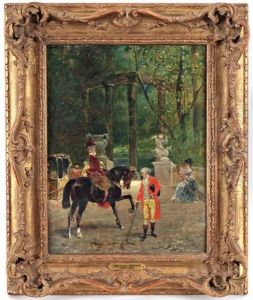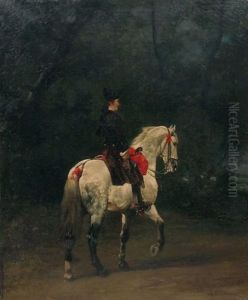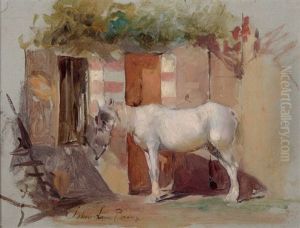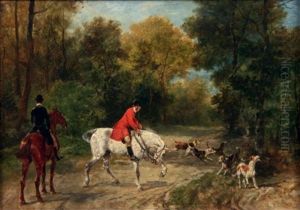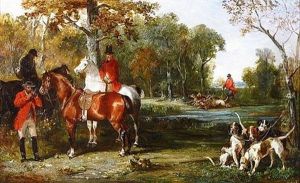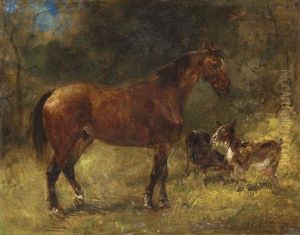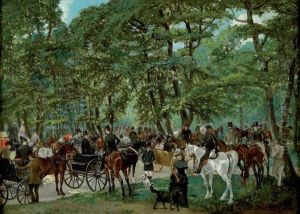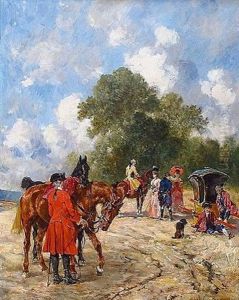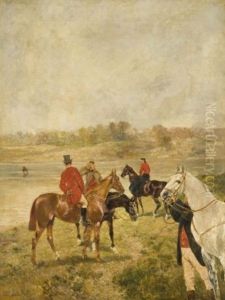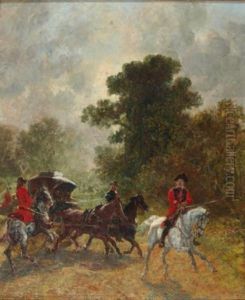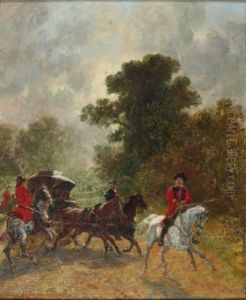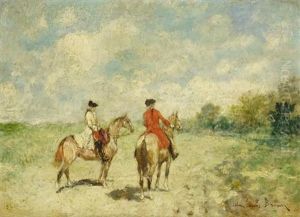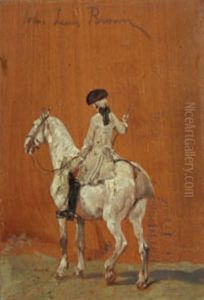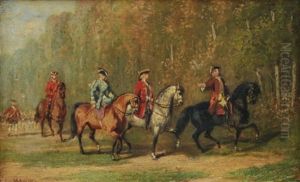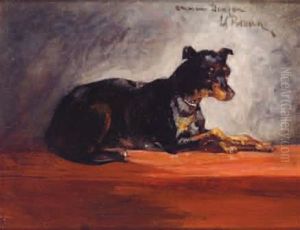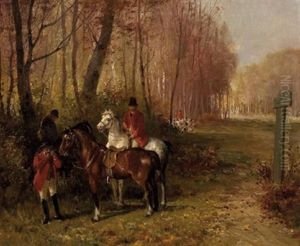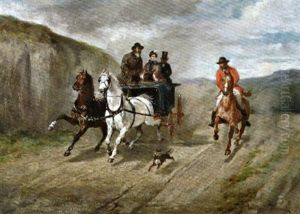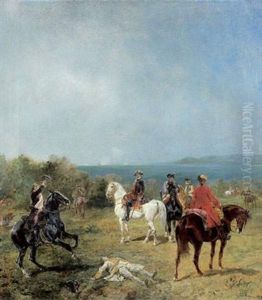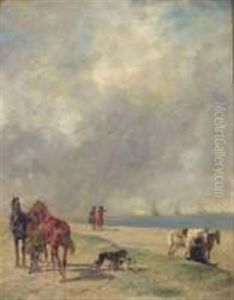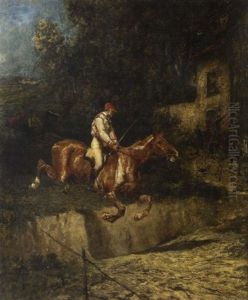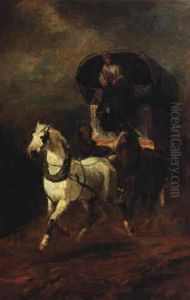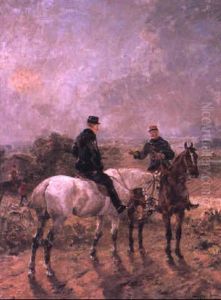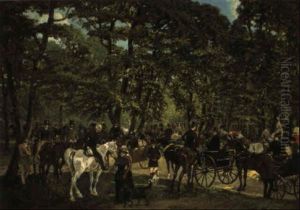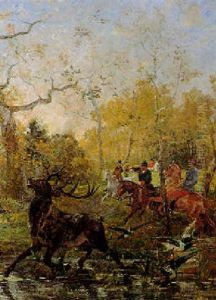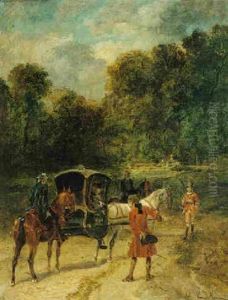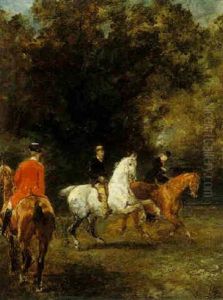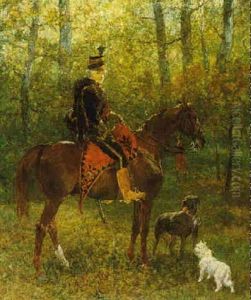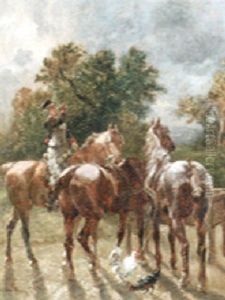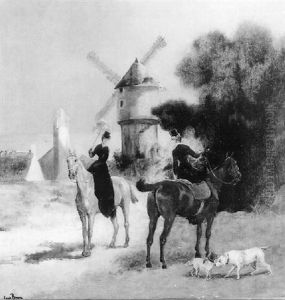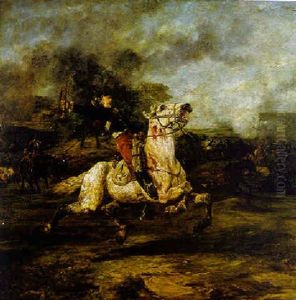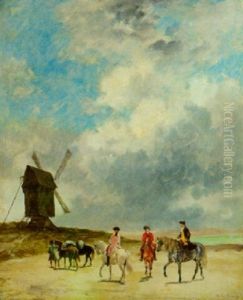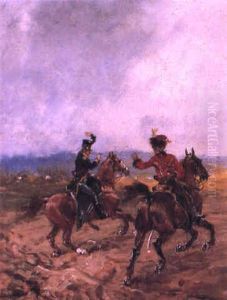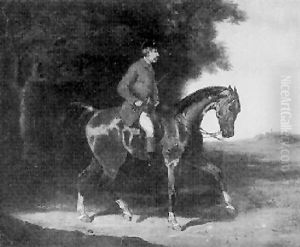John Lewis Brown Paintings
John Lewis Brown was a 19th-century French painter and illustrator of Scottish descent known primarily for his depictions of military subjects and his watercolor paintings of animals, particularly horses. Born on August 16, 1829, in Bordeaux, France, Brown developed an early interest in art and had a particular affinity for painting animals, which he often observed at his grandfather's farm.
Trained in Paris, Brown studied under the prominent French artists Paul Delaroche and Charles Gleyre. Despite this traditional academic training, Brown was influenced by the Barbizon school, which favored realism and nature. He was also inspired by the works of British animal painters, such as Sir Edwin Landseer, which is evident in his detailed and dynamic representations of horses.
Brown's military paintings were inspired by his service during the Crimean War (1853–1856), where he was exposed to the life of soldiers and the brutality of battle. His experience as a soldier was reflected in his works, which often depicted the everyday life of the cavalry and the raw emotions of warfare. Notably, he produced a series of watercolors portraying the French campaign in Mexico (1862-1867).
In addition to his paintings, John Lewis Brown was also a skilled illustrator, contributing to several periodicals of his time. He illustrated scenes of contemporary events as well as historical subjects, capturing the essence of the period with his detailed and lively style.
Despite not achieving the same level of fame as some of his contemporaries, Brown's work was appreciated for its authenticity and the skill with which he rendered his subjects. He exhibited regularly at the Paris Salon, where he received favorable critiques for his contributions.
John Lewis Brown's life was as colorful as his art. He was known for his bohemian lifestyle and his love of music; he was an accomplished violinist. His work gained recognition and was sought after by collectors during his lifetime, and he continued to paint until his death on October 6, 1890, in Paris.
Today, Brown's works can be found in various museums and private collections, offering a glimpse into the 19th-century French military life and the naturalistic depiction of animals. His legacy as a painter of animals and military scenes remains significant for art historians and collectors alike.
